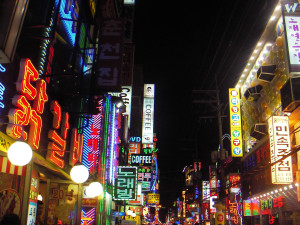Tag Archives: Reading
Need for the third space in Korea
Filed under Readings, Third Places
Nga on “Third Places”
I appreciated the article “Vanishing Third Places” because it made me aware of the bigger picture we as designer have the capability to impact social behaviors and as an individual contributing to that space. As I’ve matured I’ve become more sensitive in my environment as a whole. Not just in the immediate space that I occupy such as my apartment or office but the “in between” in other word my commute to and fro subway to work, school and the establishments nearby which gives my neighborhood character. I may trade a modest living size space for a location that has charm and a sense of community. I find New York City is an exemplary in offering the different types of neighborhoods that I did not find growing up in suburban Delaware where I spent most of my childhood.
Before immigrating to the states my family lived in a small town in Vietnam where we had a modest farm and orchard. The small shop owner that carries candy and knick-knacks down the street would know me by name and always treated me like family. The neighbors all knew the head of households by their house numbers. My grandmother was known as lady #4. My family ran two bustling open cafes– one in Saigon and one in our town walking distance from our house in Thu Duc; serving non-stop French pressed coffees playing popular American music such as Abba, Beegees and Blondie. Thirty years passed and my aunts and uncles still reflect till this day how much they’ve enjoyed running the cafés, offering an enjoyable space for people to connect, tell stories to pass their monotonous day.
Being thoughtful in designing and environment to allow by-chance meetings and informal gathering is like providing the soil condition for new seedlings to sprout and flourish. It’s amazing how the impact of our environment can affect our social well-fare as a society. Distance, convenience, open or enclosed space can impact human behavior in how we navigate and choose to spend our time in each place to bring meaningful human exchanges. I love the idea how “Third Places” bring people together organically, unforced therefore instilling diversity, which has the potential new thinking, innovation to happen. Personally, it makes me consider from a perspective of a designer to consider the approach to the practice of interaction design to build for “we” or for “me”?
Filed under Readings, Third Places

